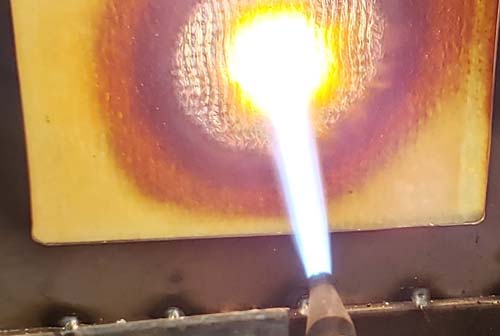
FRP, or fiber-reinforced plastic, is a composite material made of a polymer matrix reinforced with fibers. It is a strong and durable material that is used in a wide variety of applications, including construction, transportation, and manufacturing.
FRP is not inherently fire resistant, but it can be made more fire resistant by adding flame retardants to the polymer matrix. Flame retardants are substances that delay, suppress, or extinguish the spread of fire.
There are a number of different types of flame retardants that can be used in FRP profiles. Some of the most common types include:
Aluminum trihydrate (ATH): ATH is a white powder that is often used as a filler in FRP profiles. It is a non-toxic and relatively inexpensive flame retardant.
Magnesium hydroxide (MDH): MDH is similar to ATH, but it is more effective at suppressing smoke production.
Boron compounds: Boron compounds are a class of flame retardants that are very effective at preventing the spread of fire. However, they are more expensive than ATH or MDH.
The type of flame retardant that is used in an FRP profile will depend on the specific application. For example, FRP profiles that are used in construction may require a more effective flame retardant than FRP profiles that are used in manufacturing.
In addition to adding flame retardants, there are a number of other things that can be done to make FRP profiles more fire resistant. These include:
Using a high-performance resin: Some resins are more fire resistant than others. For example, epoxy resin is more fire resistant than polyester resin.
Using a high-performance fiber: Some fibers are more fire resistant than others. For example, carbon fiber is more fire resistant than fiberglass.
Using a thick layer of resin: A thicker layer of resin will provide more protection against fire.
Adding a fire-resistant coating: A fire-resistant coating can be applied to the surface of an FRP profile to provide additional protection against fire.
By following these guidelines, you can make FRP profiles more fire resistant and reduce the risk of fire damage.
Here are some additional tips for making FRP profiles more fire resistant:
Design FRP profiles to minimize the use of corners and sharp edges. Corners and sharp edges are more likely to catch fire and spread flames.
Use fire-resistant sealants to seal any gaps or openings in FRP profiles. Fire can spread through gaps and openings.
Inspect FRP profiles regularly for signs of damage. Damaged FRP profiles may be more likely to catch fire.
Have a fire safety plan in place for your facility. This plan should include procedures for evacuating the facility and extinguishing fires.
By following these tips, you can help to keep your facility safe from fire.
 +86 15303735673
+86 15303735673 Jessica@frpzs.com
Jessica@frpzs.com
 Technical Data
Technical Data











